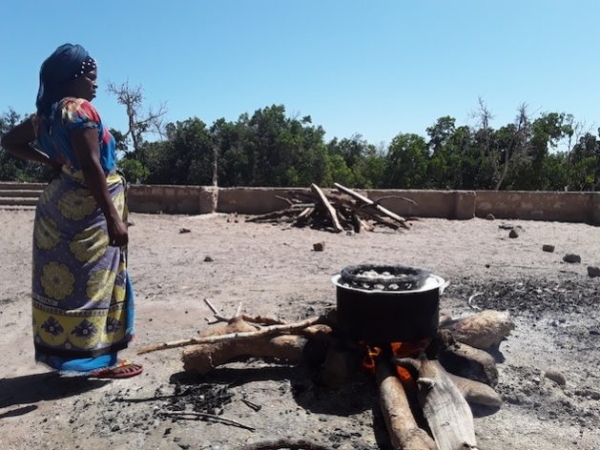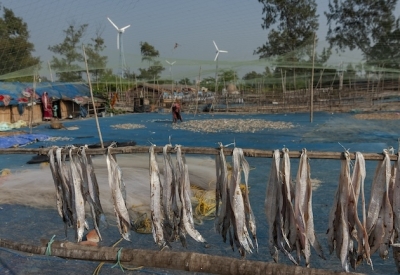PARIS, Feb 19 (IPS) — The International Energy Agency (IEA) held its annual ministers meeting last week in Paris, marking the 50th anniversary of the world’s leading energy organization. Critical topics on the agenda included energy security issues linked to Russia’s invasion of Ukraine and geopolitical tensions in the Middle East, as well as advancing a clean energy transition to meet global climate change goals.
Far from Paris lives Aïcha Bonou N’Donkie, an 18-year-old from a village in Burkina Faso whose shoulder shimmy dance move has caught the attention of millions, including media outlets around the world. A YouTube video featuring her “Aïcha tremblé” has had over 14 million views. But Ms. N’Donkie wasn’t a professional dancer. Rather, the day she first gained attention with her dance move began with the much more mundane chore of gathering firewood used for cooking.
And in this, Ms. N’Donkie is, according to a recent report I co-authored (with Siyuan Ding) for Columbia University’s Center on Global Energy Policy, one of almost 400 million women household biomass producers. They constitute the largest, and largely invisible, workforce in our global energy system.
While much of the attention regarding the energy sector is paid to the workers (predominantly male) who labor in the oil and gas, coal and electricity businesses, these women biomass producers are the providers of the primary source of energy for millions of families: household biomass, which is used for the most essential of human needs, eating.
There are an estimated 2 billion people who rely on traditional cooking methods fueled by biomass such as firewood and animal waste. They live in the poorer regions of the world, mostly in the rural areas of Sub-Saharan Africa and developing Asia. In notably much of Sub-Saharan Africa, women are the primary providers of this energy.
Our preliminary analysis indicates that there are 190 million women (and girls) household biomass producers in Sub-Saharan Africa and a nearly equivalent amount in developing Asia, with 7 million in Latin America and the Caribbean.
By comparison, the IEA estimates that there are about 40 million people working in the formal energy production and distribution subsectors. We often see their pictures: workers in hardhats at oil drilling wells, emerging from coal mines, in cranes fixing transmission lines, or walking on roofs installing solar panels. They are an important part of our economic landscape, who have received increasing attention amid the discussions about the clean energy transition.
There is much less discussion and are far fewer pictures of women household biomass producers, like Ms. N’Donkie, whose labor can involve collecting and carrying loads of wood that weigh 50 pounds or more, and who spend up to 10 hours or even in some regions, 20 or more hours per week in this work. While women carrying bundles of firewood on their backs may not conjure the usual images of energy’s labor force, they are a very important part of the global energy landscape, providing a principal source of energy for an estimated 200 million families.
To date, much of the discussion of this labor has occurred in the context of the effort to provide universal access to clean cooking technologies (under United Nations Sustainable Development Goal #7).
This involves notably replacing firewood, etc. with cleaner and more modern cooking technologies, which in turn would go far to obviate the need for the time-consuming labor of collecting and preparing fuelwood and animal waste for burning in traditional stoves. The clean cooking discussion is, however, also inherently tilted to women as consumers rather than producers.
While there has been progress in expanding the use of clean cooking technologies, universal access remains far off … and analysts point to the ongoing use of household biomass for years to come, notably in Sub-Saharan Africa where poverty remains a key barrier. Accordingly, we estimate in our report that there are likely to still be 200 million or more women biomass producers in 2030.
And so, the question – and challenge – remains as to what can be done to improve the conditions for these women energy producers.
Part of the response is more research to better ascertain their circumstances and, importantly, their wants. Understanding the varied preferences of these millions of women will require time and resources, not only because of their numbers, but also because of the diversity of the situations they labor in and the overlapping challenges that many face of poverty, gender discrimination and, for some, marginalization (including, as refugees). This granular information is needed to develop effective and context-adapted solutions, an important lesson from the clean cooking effort.
As the international community -- including through COPs, the IEA and the World Bank -- looks to advance a low-carbon future, it is important, in parallel, for the specialized energy and development communities to explore what can be done now to improve the lives of these women given their central role in the global energy landscape.
While, for arguably serendipitous reasons, we can today better see the talented Aïcha Bonou N’Donkie, there are hundreds of millions of women energy producers who remain largely invisible to too many. Seeing these women and understanding them better is a critical step to developing programs to help them to improve the quality of their lives in the face of the poverty and other challenges they face.
Philippe Benoit is managing director at Global Infrastructure Advisory Services 2050. He previously held management positions at the World Bank and the International Energy Agency.






